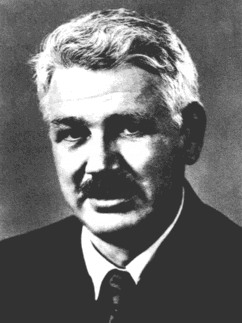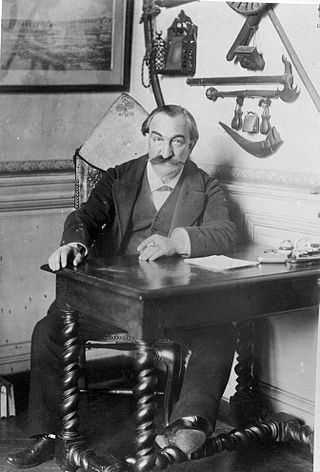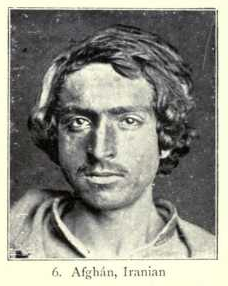
Carleton Stevens Coon was an American anthropologist. A professor of anthropology at the University of Pennsylvania, lecturer and professor at Harvard University, he was president of the American Association of Physical Anthropologists. Coon's theories on race were widely disputed in his lifetime and are considered pseudoscientific in modern anthropology.
Turan is a historical region in Central Asia. The term is of Iranian origin and may refer to a particular prehistoric human settlement, a historic geographical region, or a culture. The original Turanians were an Iranian tribe of the Avestan age and in the later Iranian tradition generally, the term Turan is perceived as denoting lands inhabited by Turkic-speaking tribes.
Australo-Melanesians is an outdated historical grouping of various people indigenous to Melanesia and Australia. Controversially, some groups found in parts of Southeast Asia and South Asia were also sometimes included.
The Caucasian race is an obsolete racial classification of humans based on a now-disproven theory of biological race. The Caucasian race was historically regarded as a biological taxon which, depending on which of the historical race classifications was being used, usually included ancient and modern populations from all or parts of Europe, Western Asia, Central Asia, South Asia, North Africa, and the Horn of Africa.

Turanism, also known as pan-Turanism or pan-Turanianism, is a pan-nationalist political movement built around pseudoscientific claims of biological and linguistic connections between various ethnic groups of Eurasia. It revolves around the abandoned proposal of a Ural-Altaic language family, which hypothesizes that the Turkic, Mongolic, Tungusic, and Uralic peoples share Inner and Central Asian origins and therefore close cultural, ethnic, and linguistic bonds. Supporters of Turanism propose political unity among these groups, chiefly to oppose the cultural and political influences of the Indo-Europeans of Europe and South Asia, as well as the Sino-Tibetans of East Asia. The movement emerged in the 19th century to counter pan-nationalist ideologies such as pan-Germanism, and built upon the ideas of pan-Slavism.
The Nordic race is an obsolete racial concept which originated in 19th-century anthropology. It was once considered a race or one of the putative sub-races into which some late-19th to mid-20th century anthropologists divided the Caucasian race, claiming that its ancestral homelands were Northwestern and Northern Europe, particularly to populations such as Anglo-Saxons, Germanic peoples, Balts, Baltic Finns, Northern French, and certain Celts and Slavs. The supposed physical traits of the Nordics included light eyes, light skin, tall stature, and dolichocephalic skull; their psychological traits were deemed to be truthfulness, equitability, a competitive spirit, naivete, reservedness, and individualism. In the early 20th century, the belief that the Nordic race constituted the superior branch of the Caucasian race gave rise to the ideology of Nordicism.
The Mediterranean race is an obsolete racial classification of humans based on a now-disproven theory of biological race. According to writers of the late 19th to mid-20th centuries it was a sub-race of the Caucasian race. According to various definitions, it was said to be prevalent in the Mediterranean Basin and areas near the Mediterranean, especially in Southern Europe, North Africa, most of West Asia, the Middle East or Near East; western Central Asia, parts of South Asia, and parts of the Horn of Africa. To a lesser extent, certain populations of people in Ireland, western parts of Great Britain, and Southern Germany, despite living far from the Mediterranean, were thought to have some minority Mediterranean elements in their population, such as Bavaria, Wales, and Cornwall.

The Alpine race is a historical race concept defined by some late 19th-century and early 20th-century anthropologists as one of the sub-races of the Caucasian race. The origin of the Alpine race was variously identified. Ripley argued that it migrated from Central Asia during the Neolithic Revolution, splitting the Nordic and Mediterranean populations. It was also identified as descending from the Celts residing in Central Europe in Neolithic times. The Alpine race is supposedly distinguished by its moderate stature, neotenous features, and cranial measurements, such as high cephalic index.
Capoid race is a grouping formerly used for the Khoikhoi and San peoples in the context of a now-outdated model of dividing humanity into different races. The term was introduced by Carleton S. Coon in 1962 and named for the Cape of Good Hope. Coon proposed that the term "Negroid" should be abandoned, and the sub-Saharan African populations of West African stock should be termed "Congoid" instead.
The Armenoid race was a supposed sub-race in the context of a now-outdated model of dividing humanity into different races which was developed originally by Europeans in support of colonialism. The Armenoid race was variously described as a "sub-race" of the "Aryan race" or the "Caucasian race".
Typology in anthropology was the categorization of the human species by races, based solely on traits that are readily observable from a distance such as head shape, skin color, hair form, body build, and stature. During the late 19th and early 20th centuries, anthropologists used a typological model to divide people from different ethnic regions into races,.

David Léon Cahun was a French traveler, Orientalist and writer.
Various attempts have been made, under the British Raj and since, to classify the population of India according to a racial typology. After independence, in pursuance of the government's policy to discourage distinctions between communities based on race, the 1951 Census of India did away with racial classifications. Today, the national Census of independent India does not recognise any racial groups in India.

The Irano-Afghan race or Iranid race is an obsolete racial classification of human beings based on a now-disproven theory of biological race. Some anthropologists of the 20th century classified the populations native to the Iranian plateau as belonging to this race, which was usually seen as a subrace of the Caucasian race or the Mediterranean racial subtype of that race, depending on the authority consulted.
Mongoloid is an obsolete racial grouping of various peoples indigenous to large parts of Asia, the Americas, and some regions in Europe and Oceania. The term is derived from a now-disproven theory of biological race. In the past, other terms such as "Mongolian race", "yellow", "Asiatic" and "Oriental" have been used as synonyms.
Negroid is an obsolete racial grouping of various people indigenous to Africa south of the area which stretched from the southern Sahara desert in the west to the African Great Lakes in the southeast, but also to isolated parts of South and Southeast Asia (Negritos). The term is derived from now-disproven conceptions of race as a biological category.
The Caspian race was a supposed sub-race of the Caucasian race in the context of a now-outdated model of dividing humanity into different races which was developed originally by Europeans in support of colonialism. The term was used by M. G. Abdushelishvili (1979) as constituting a branch of the Mediterranean race or Irano-Afghan race. In Soviet-era anthropology, the term was used to include Tats and Azerbaijanis.
The history of anthropometry includes its use as an early tool of anthropology, use for identification, use for the purposes of understanding human physical variation in paleoanthropology and in various attempts to correlate physical with racial and psychological traits. At various points in history, certain anthropometrics have been cited by advocates of discrimination and eugenics often as part of novel social movements or based upon pseudoscience.
Proto-Mongoloid is an outdated racial classification of human beings based on a now-disproven theory of biological race. In anthropological theories of the 19th and 20th centuries, proto-Mongoloids were seen as the ancestors of the Mongoloid race.
The Indid race was a supposed sub-race in the context of a now-outdated model of dividing humanity into different races which was developed originally by Europeans in support of colonialism. In 19th and early 20th century anthropological literature, the Indid type was classified as belonging to the Mediterranean type of the greater Caucasoid race.





